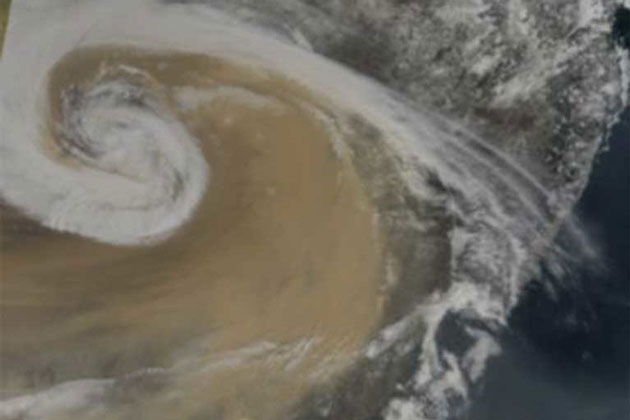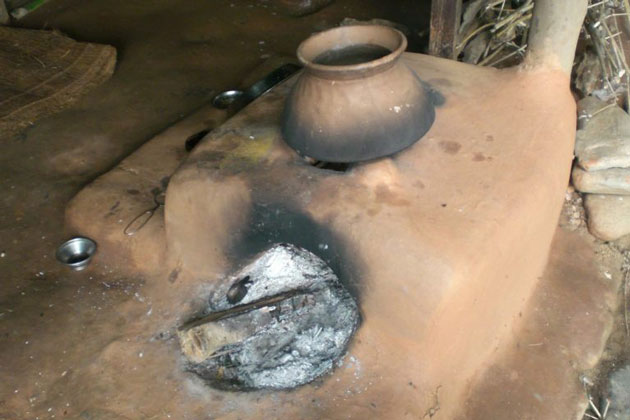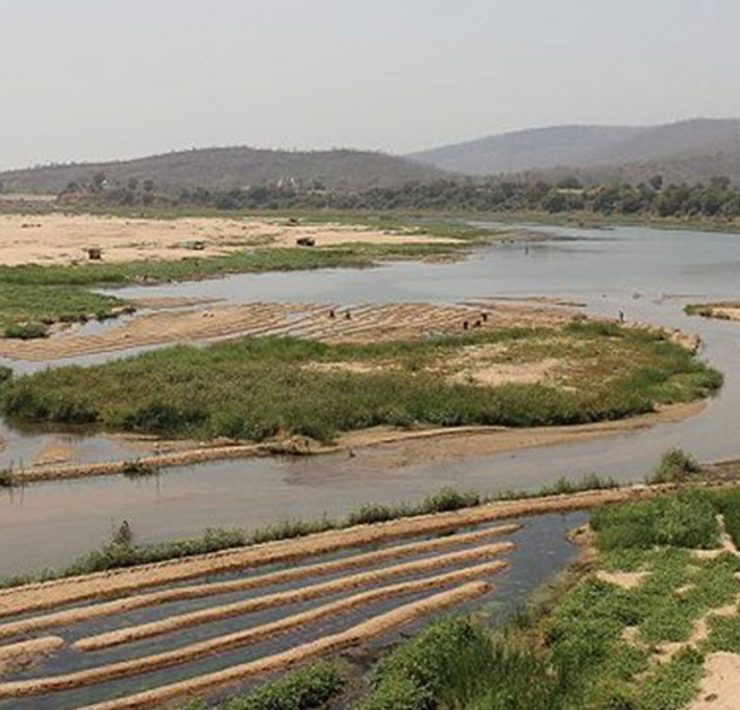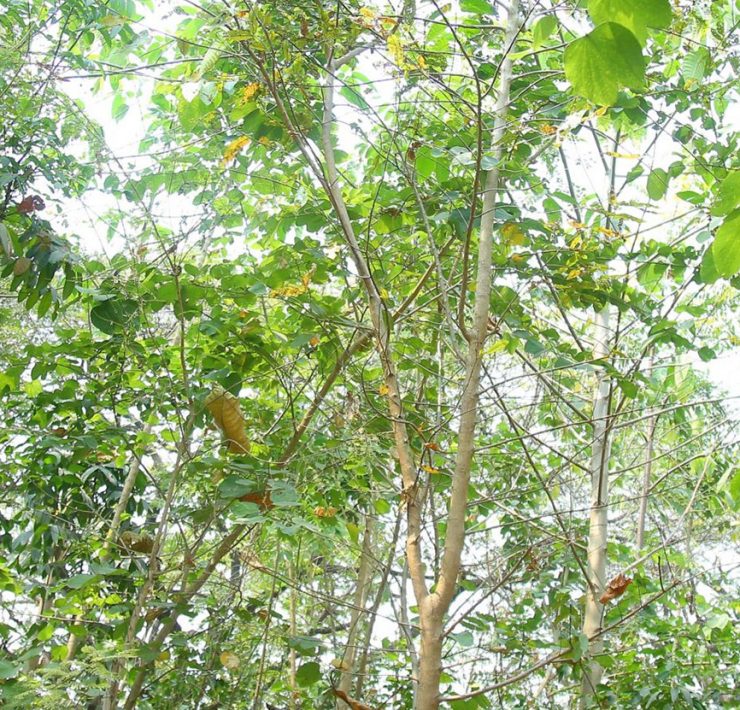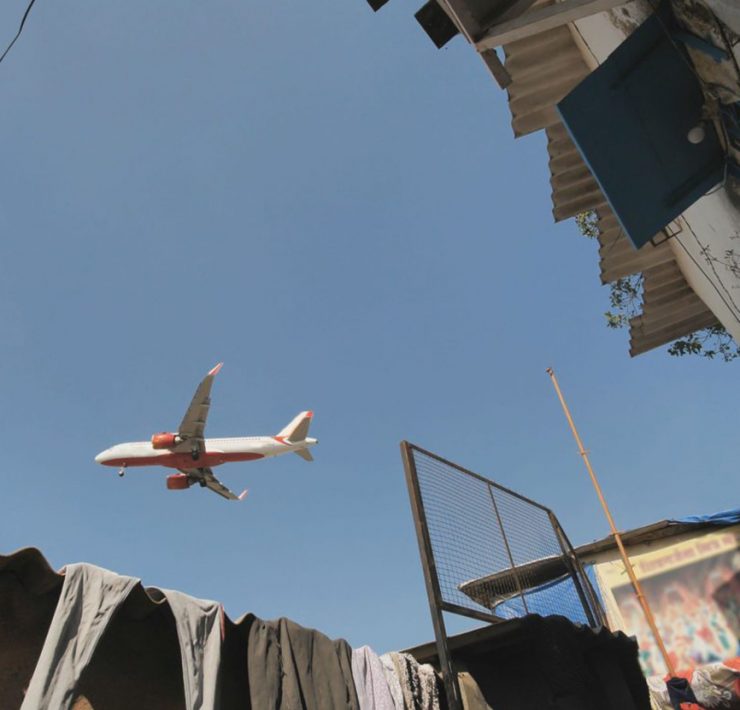Aerosol pollution is a health hazard that also destabilises Earth’s climate

- Aerosols are fine particulates that float in the atmosphere. While there has not been significant change in presence of natural aerosols, human-caused aerosols have increased rapidly.
- An immense aerosol cloud regularly swirls over India, China and Southeast Asia, fed by particles of ash, soot and organic carbon compounds.
- Scientists say that accurately modelling the intensity of aerosol effects on climate change is vital to humanity’s future but aerosol complexity makes it difficult to model and understand.
The causes of climate change are typically attributed to greenhouse gases like carbon dioxide or methane that form homogeneous mixtures spread evenly across the globe, which lead to relatively uniform and well-understood effects, namely, the warming of the planet. But scientists are increasingly realising that greenhouse gases only tell part of the story. Another major climate story is told by aerosols.
Aerosols are a mixed bag of substances, liquid and solid, that differ from their gassy brethren in almost every way. They tend to hang in the atmosphere near their source, or move as localised or regional masses via air currents, and they can affect the climate in a host of contradictory ways, both cooling or warming, triggering drought or intense rainfall. Aerosols’ effects are tough to quantify and characterise, but have the potential to fill many gaps in climate science.
“That’s why the community wants to understand [them],” says Stephen Schwartz, a senior scientist in the Environmental and Climate Sciences Department of Brookhaven National Laboratory. “That’s the big unknown.”
A look through a microscope reveals the complexity of aerosols. They range in size from a few atoms across to the width of a human hair. They include crystals of sulphate, balls of almost pure black carbon (commonly, though not entirely accurately, called soot), droplets of nitric or sulfuric acid, spores of pollen. They may be salt freed from the crests of breaking waves, or desert sand whipped up by the wind. One of the largest natural sources of aerosols are plankton, which breathe out dimethyl sulphide (DMS), a strong-smelling chemical that gives the sea it’s familiar pungent odour. DMS reacts with oxygen to produce clouds of sulfuric acid. Sulphur dioxide released by volcanoes does the same.
Ninety percent of aerosols in the atmosphere are naturally occurring, but their levels have remained relatively constant over time, says physicist, Yi Ming a Princeton University lecturer and researcher at the Geophysical Fluid Dynamics Laboratory of the U.S. National Oceanic and Atmospheric Administration (NOAA). “If they’re not changing that much, you don’t have to worry about them.”
On the other hand, he says, we do have to worry about anthropogenic, or human-made aerosols. These are emitted from vehicle exhausts; the smokestacks of factories, ships and coal-burning powerplants; by farmers burning field stubble and land grabbers clearing Amazon forest with fire; by gas flares on oil rigs and discarded plastic shopping bags. Even tumble driers release microplastic fibres that float skyward. These sources have increased dramatically over the industrial period, roughly in step with greenhouse gases.
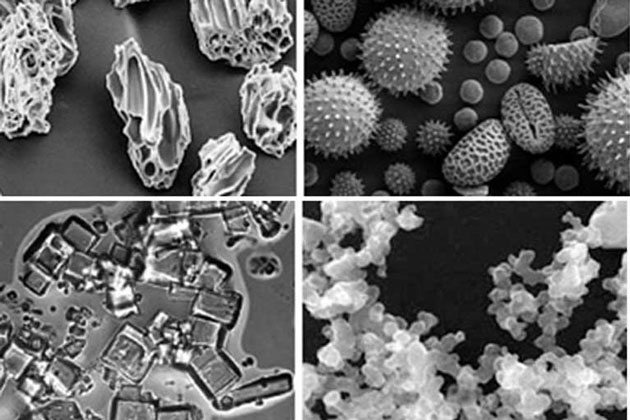
Aerosols: Climate change wild card
Like greenhouse gases, there are good reasons to curb aerosol pollution. One motivation: human health. “[Aerosols] impact almost every part of the human body, depending upon the composition, exposure amount and size,” says Bhupesh Adhikary, an air pollution specialist at the Kathmandu-based International Centre for Integrated Mountain Development and a lead author for the most recent assessment report by the Intergovernmental Panel on Climate Change (IPCC).
The worst aerosols, he says, are very fine particulates, “that can penetrate deep into the lungs and may even enter the blood stream,” exacerbating respiratory and cardiovascular conditions.
According to current खोजों, atmospheric particulate matter kills 4.2 million people a year, 200,000 in the U.S. alone, making it “a leading source of premature mortality globally.” Other sources have put the global premature deaths from air pollution as high as 6 million annually.
In that regard, there is some good news. Unlike greenhouse gases, aerosols don’t last long in the atmosphere. “If you turn off all the greenhouse gas emitters, [those gases] would just keep on persisting in the atmosphere for hundreds of years,” says Ming. “If you turn off all the [human-contributed] aerosol emissions today, they will be gone in [about] a week.”
But now that we are producing them, eliminating aerosols isn’t so simple. Most aerosols help cool the planet by reflecting sunlight back out into space, reducing the amount of radiant energy that reaches Earth’s surface. They also help create clouds or brighten existing clouds, by acting as condensation nuclei around which water vapor condenses. This phenomenon is clearly visible in satellite images of so-called “ship tracks,” where sulphur-spewing ships have passed under clouds. Clouds reflect light back into space even better than the particles themselves.
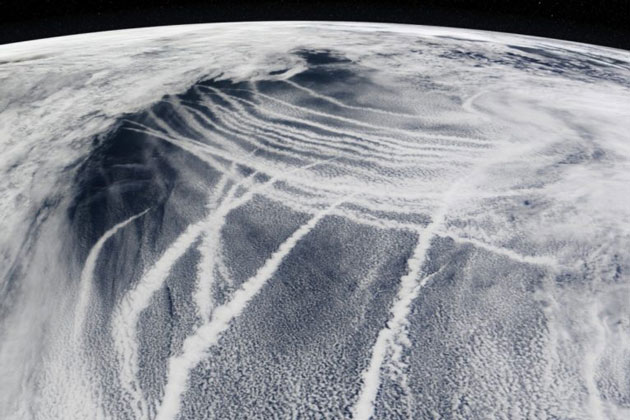
Here’s the important bit: The cooling effect of anthropogenic aerosols is thought to have counteracted global warming significantly, potentially halving the warming effect of our greenhouse gas emissions. Without this masking effect, the world might already have surpassed 1.5°C (2.7°F) of warming above pre-industrial levels — the threshold for avoiding planetary disaster specified in the 2015 Paris climate agreement.
Climate scientist James Hansen, who famously predicted the cooling effect of Mount Pinatubo in the 1990s, made headlines last year by warning that eliminating sulphate aerosols could double the rate of global warning over the next 25 years.
But the actual amount of increased warming that could result from a drastic curbing of aerosols is still very much up in the air, contend many other scientists. The wispy nature of aerosols eludes observation and makes them tricky to predict, despite recent advances in modelling. They can’t be easily plotted on a grid map, it’s hard to distinguish anthropogenic from natural aerosols, and their effects depend on whether they are above or below clouds, over land or over sea, and on the size and shape of individual particles. Even the colour of the fabric from which airborne microplastic fibres are derived affects how much light they reflect.
The IPCC estimates greenhouse gases trap an extra 3.3 watts per square meter of solar energy beyond what the Earth received in the pre-industrial era, a process called radiative forcing. Anthropogenic aerosols, meanwhile, reflect anywhere between 0.4 and 1.7 watts per square meter of solar energy.
“That’s huge,” says Schwartz of the spread. “If it’s at the high end, you subtract 1.7 from 3.3 and get 1.6, and if it’s 0.4 you get 2.9. So that’s almost a factor of two.” He adds, “that’s why some people call aerosol forcing the wild card in understanding human influence on temperature.”
Overshooting a planetary boundary?
Is there an optimal level of aerosol pollution we can tolerate, an uneasy trade-off between human health and the cooling? The Stockholm Resilience Centre, an international group of scientists, counts aerosol pollution among the nine planetary boundaries — critical limits to key natural processes currently being adversely influenced and overshot by our species.
Destabilising any one of these boundaries could threaten the stability of Earth’s operating system, bring down civilization and even put life as we know it at risk. Among the nine: climate change, ocean acidification, the release of novel chemical entities (including heavy metals and plastics), the loss of biodiversity integrity, and, of course, atmospheric aerosol pollution.
At the global level, the Stockholm Centre admits there is just not enough science to say exactly how much aerosol pollution is too much. At the regional level, however, these tiny particles may already be causing complex and interacting impacts.
Aerosols first came to public attention in the 1970s, not so much because of their cooling impact, but due to acid rain. Cars and coal-burning power plants in North America were then churning out seven Mount Pinatubos’ worth of sulphur dioxide annually. That sulphur dioxide reacted with water in the atmosphere to produce sulfuric acid, which rained down on forests and fish. Spruce and fir trees died in huge numbers at high altitudes in the U.S. Appalachians, while lakes turned lifeless in New York’s Adirondack Mountains.
That disaster spurred feverish scientific research into sulphate aerosols, along with intense media scrutiny and public dialogue, even in schools.
But by the 1990s, the U.S. Clean Air Act, and similar legislation in Canada and Europe, forced scrubbers onto smokestacks, catalytic converters into cars, and imposed fines on polluters. The results were dramatic. Since 1980, sulphur dioxide emissions in North America and Europe have declined by about 80%, and by 2018 New England’s evergreens were recovering.
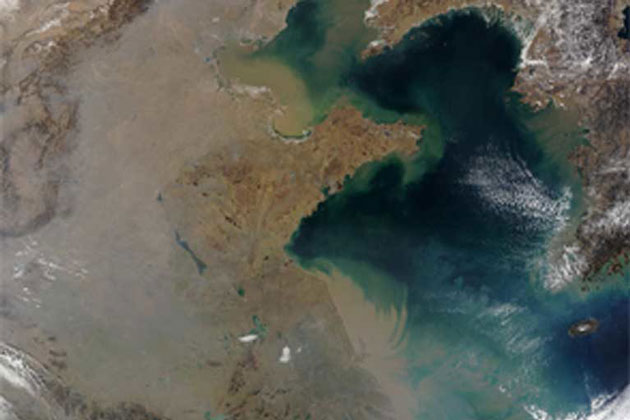
Atmospheric brown cloud over Asia
About the same time as North America and Europe were reining in smog, China, India and other parts of Asia were industrialising at breakneck speed. By the early 2000s, sulfur dioxide emissions in this region had quadrupled, and aerosol-induced cooling had reached the same level as North America 30 years earlier. “It was horrible,” says Yi Ming. “You rarely saw blue sky.”
Since 2010, China has reduced sulfur and other emissions through stricter pollution controls, though the country continues building an average of one new coal-fired powerplant almost every week. Emissions have remained so pronounced that when COVID-19 restrictions slowed China’s industrial output in 2020, local temperatures warmed by 0.3°C (0.5°F).
India’s aerosol emissions continue growing, as do those in other Asian nations. It isn’t only heavy industry to blame. “Before, in South Asia everyone was on a bicycle or walking,” says Bhupesh Adhikary. “Earlier [people] were traveling by bus, but now a family will have three cars, or two motorbikes.” As populations grow, he notes, aerosol emissions from even traditional energy sources, such as wood and dung burning for cooking and heat, also increase.
Today, an immense cloud regularly swirls over India, China and Southeast Asia, and wafts out over the Indian Ocean — fed by dark, radiation-absorbing particles of ash, soot and organic carbon compounds from cooking stoves, coal plants, cars and tuk-tuks.
The atmospheric brown cloud of pollution over Asia is vast and impactful. The 3-kilometer-thick (1.9-mile) mass blocks as much as 10% of sunlight from reaching Earth’s surface regionally; this immense dense cloud has been linked to a dramatic weakening of Asia’s winter monsoon. It stalls convection inhibiting rainfall as cloud droplets cling to particles instead of falling.
When these aerosols finally fall out of the air, they can land on alpine snow and ice, and hasten melting by absorbing solar radiation. Himalayan glaciers are retreating by up to 1 meter (3 feet) a year, and are predicted to halve in size by 2050. Some experts attribute almost of all this loss to aerosols rather than greenhouse gas warming. Those Himalayan glaciers feed rivers that are the water source for some 750 million people. Loss of that water would be a human and ecological calamity.
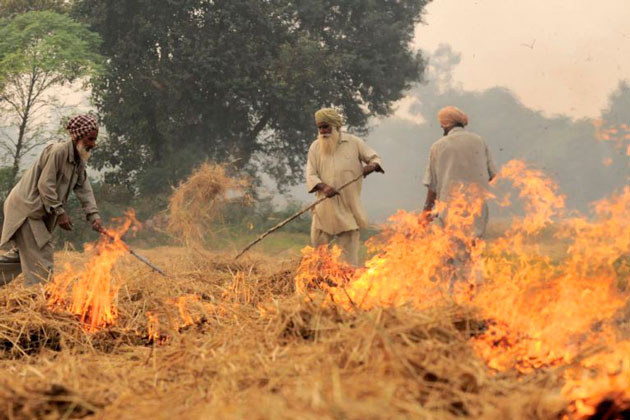
Aerosols clouding the future
Meanwhile, back in North America, the continent has tamed its sulphur emissions but wildfires are on the rise, posing the same kinds of threats as the atmospheric brown cloud of soot and dust pollution over Asia and Africa. There are already signs that brown carbon — remnant unburnt biomass from grass and trees — is accumulating in the upper atmosphere. Also concerning is black carbon deposition in the Arctic — pollution carried there on winds which is warming up and melting Arctic ice and snow.
If melting sea ice opens the Arctic to industry and seagoing vessels, black carbon plumes in the polar region (arising from transpolar shipping, gas flaring at polar oil wells, and other industrial sources) could potentially cause a fivefold increase in Arctic surface temperature response as compared to the same amount of black carbon emitted at midlatitudes — resulting in major melting of regional snow and ice.
Despite the uncertainty around aerosol impacts, cooling still seems to be their dominant effect. Improved modelling in recent years has revealed many ways in which aerosol cooling is holding the worst effects of greenhouse gas warming in check. Without aerosol cooling, for example, the atmospheric rivers carrying vast amounts of moisture and causing calamitous flooding around the world could be even stronger; the Atlantic Meridional Overturning Circulation (ocean currents that include the Gulf Stream) should be weaker; and the waters of the eastern equatorial Pacific Ocean should be warmer.
“We were scratching our heads, like this ‘doesn’t make sense,’” says Ulla Heede, a graduate student at Yale University’s Department of Earth & Planetary Sciences who is studying the Pacific Ocean anomaly. Earlier models solely based on greenhouse gas effects suggested that global warming should have weakened easterly trade winds causing them to draw up less of the deep cool ocean water that regulates regional temperatures. That is, “Unless aerosols play a role,” she says. Heede plugged aerosol cooling estimates into the models, and discovered a perfect fit. “It was the only thing left.”
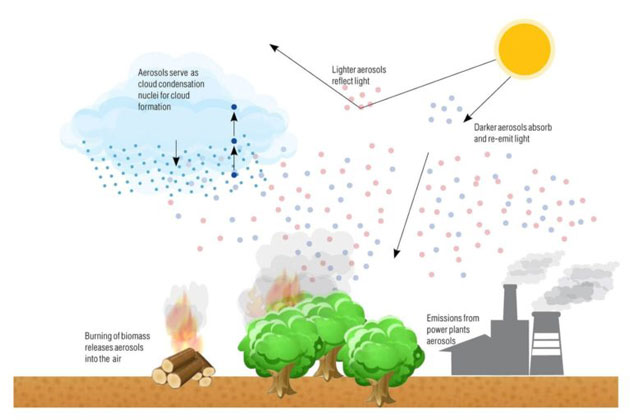
But what happens if aerosols, with their cooling effect, are reduced? Heede predicts flooding for Pacific islanders, plus other unknowable outcomes. “If the circulation slows down, a lot of other things are going to adjust, and I don’t think we know, as humans, how those are going to be experienced.” All this thorny uncertainty could diminish as modelling and observational data continue being refined.
CITATION:
Gao, C., Ludlow, F., Matthews, J. A., Stine, A. R., Robock, A., Pan, Y., … Sigl, M. (2021). Volcanic climate impacts can act as ultimate and proximate causes of Chinese dynastic collapse. Communications Earth & Environment, 2(1). doi:10.1038/s43247-021-00284-7
Ridley, D. A., Heald, C. L., Ridley, K. J., & Kroll, J. H. (2017). Causes and consequences of decreasing atmospheric organic aerosol in the United States. Proceedings of the National Academy of Sciences, 115(2), 290-295. doi:10.1073/pnas.1700387115
Forest, C. E. (2018). Inferred net aerosol forcing based on historical climate changes: A review. Current Climate Change Reports, 4(1), 11-22. doi:10.1007/s40641-018-0085-2
Rockström, J., Steffen, W., Noone, K., Persson, Å., Chapin III, F. S., Lambin, E. F., … Foley, J. A. (2009). A safe operating space for humanity. Nature, 461, 472–475. doi:10.1038/461472a
Fisher, S., Bellinger, D. C., Cropper, M. L., Kumar, P., Binagwaho, A., Koudenoukpo, J. B., … Landrigan, P. J. (2021). Air pollution and development in Africa: Impacts on health, the economy, and human capital. The Lancet Planetary Health, 5(10), e681-e688. doi:10.1016/s2542-5196(21)00201-1
Pan, X., Ichoku, C., Chin, M., Bian, H., Darmenov, A., Colarco, P., … Cui, G. (2020). Six global biomass burning emission datasets: Intercomparison and application in one global aerosol model. Atmospheric Chemistry and Physics, 20(2), 969-994. doi:10.5194/acp-20-969-2020
Ichoku, C., Ellison, L. T., Willmot, K. E., Matsui, T., Dezfuli, A. K., Gatebe, C. K., … Habib, S. (2016). Biomass burning, land-cover change, and the hydrological cycle in Northern sub-Saharan Africa. Environmental Research Letters, 11(9), 095005. doi:10.1088/1748-9326/11/9/095005
Gettelman, A., Lamboll, R., Bardeen, C. G., Forster, P. M., & Watson‐Parris, D. (2021). Climate impacts of COVID‐19 induced emission changes. Geophysical Research Letters, 48(3). doi:10.1029/2020gl091805
Gunthe, S. S., Liu, P., Panda, U., Raj, S. S., Sharma, A., Darbyshire, E., … Coe, H. (2021). Enhanced aerosol particle growth sustained by high continental chlorine emission in India. Nature Geoscience, 14(2), 77-84. doi:10.1038/s41561-020-00677-x
Pandve, H. T. (2008). The Asian brown cloud. Indian Journal of Occupational and Environmental Medicine, 12(2), 93. doi:10.4103/0019-5278.43269
Ramanathan, V., Chung, C., Kim, D., Bettge, T., Buja, L., Kiehl, J. T., … Wild, M. (2005). Atmospheric Brown clouds: Impacts on South Asian climate and hydrological cycle. Proceedings of the National Academy of Sciences, 102(15), 5326-5333. doi:10.1073/pnas.0500656102
Menon, S., Koch, D., Beig, G., Sahu, S., Fasullo, J., & Orlikowski, D. (2010). Black carbon aerosols and the third polar ice cap. Atmospheric Chemistry and Physics, 10(10), 4559-4571. doi:10.5194/acp-10-4559-2010
Sand, M., Berntsen, T. K., Seland, Ø., & Kristjánsson, J. E. (2013). Arctic surface temperature change to emissions of black carbon within Arctic or midlatitudes. Journal of Geophysical Research: Atmospheres, 118(14), 7788-7798. doi:10.1002/jgrd.50613
Baek, S. H., & Lora, J. M. (2021). Counterbalancing influences of aerosols and greenhouse gases on atmospheric rivers. Nature Climate Change, 11(11), 958-965. doi:10.1038/s41558-021-01166-8
Menary, M. B., Robson, J., Allan, R. P., Booth, B. B., Cassou, C., Gastineau, G., … Zhang, R. (2020). Aerosol‐forced AMOC changes in CMIP6 historical simulations. Geophysical Research Letters, 47(14). doi:10.1029/2020gl088166
Heede, U. K., & Fedorov, A. V. (2021). Eastern equatorial Pacific warming delayed by aerosols and thermostat response to CO2 increase. Nature Climate Change, 11(8), 696-703. doi:10.1038/s41558-021-01101-x
This article first appeared on Mongabay.


